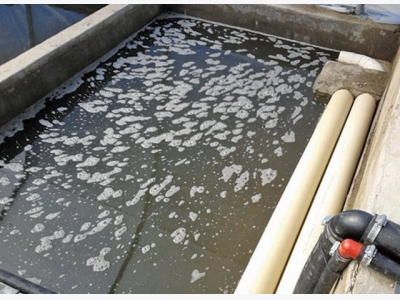A better way to do aquaponics

The traditional aquaponics single-unit system disadvantages the fish, the plants or both. Now might be the right time to rethink the design.
Deep-V-bottomed sediment traps can easily be drained to supply semi-solid waste to a plant-growing system. Photo: Nicholas James
Aquaponics, a mutually beneficial system, is the combined culture of fish and plants. In short, vegetables and herbs are grown organically in a system where the nutrients are supplied by fish waste.
It is a hot topic at the moment and is likely to stay popular at a hobbyist or small commercial level.
However, the traditional aquaponics system has flaws that can negatively affect either the fish or the plants.
Chief amongst these is that the growing medium for plants, usually gravel, is also the filtration medium for the fish-culture water, with the water continuously circulating between the systems. A frequent problem is that the filtration is often too rapid to break down the ammonia, retarding growth of fish and plants.
Secondly, warm-water fish – tilapia or carp – need to be housed within the confines of a tunnel to achieve significant body growth. To achieve the necessary temperature of 28°C to 30°C required for rapid fish growth requires an air temperature in excess of 40°C, excessive for most plants.
The typical solution is to compromise on fish growth by ventilating the tunnel to reduce the temperature to acceptable limits for the plants. This results in excellent plant yield but negligible yield of fish in the cooled water. So, a combined system is fraught with compromises.
Modification
Aquaponic systems are frequently biased in favour of the plants, yet both can thrive with a design modification. To obviate the problem of temperature preferentials, the two systems should be divorced from each other.
The fish culture system, enclosed in a tunnel, can be designed for maximum fish growth. This implies self-cleaning tanks draining to a sediment tank and biological filter.
It is no different to a standalone fish culture system. However, the prerequisite is to capture most of the nutrients in the sediment trap and use them for plants while the rest of the water passes through a traditional bio-filter and returns, warm and clean, to the fish.
The plant culture unit can be remote from the fish culture system, in its own shade house or ventilated tunnel.
The only connection is that a portion of the concentrated fish waste is drained periodically by gravity from the sediment to a holding tank in the plant unit.
A small pump then circulates the homogenised waste from this tank through the gravel beds in the typical manner, with bell-siphons keeping the beds moist and fertilised.
Plants can thus be grown in optimal temperature or humidity without affecting fish growth. The only additional cost is the construction of a bio-filtration tank for the fish to compensate for the loss of gravel-bed filtration.
Using such a system has many advantages:
- Fish growth is optimal, unaffected by ventilating the plants, and results in higher yield;
- Humidity is reduced to acceptable levels, limiting mould and fungal attacks;
- More space is available for the fish, with wider, shallower tanks that absorb more oxygen;
- The removal of all solid wastes means that relatively simple bio-filtration can be used;
- The design is effective at small or large commercial scale;
- A plant culture unit can easily be added to a fish culture system.
Related news
 The benefits and history of aquaponics
The benefits and history of aquaponics Aquaponics is a combination of raising fish (aquaculture) and the soil-less growing of plants (hydroponics) that grows fish and plants together in one integrate
 Home Aquaponics Build
Home Aquaponics Build The build pictures you will see below are for an aquaponics system. Aquaponics is a method of growing vegetables (indoor or outdoor)
 Aquaponics at Home: A Modern Farmer Review of Turnkey Aquaponics Systems for All Levels
Aquaponics at Home: A Modern Farmer Review of Turnkey Aquaponics Systems for All Levels Aquaponics an environmentally-friendly mash-up of aquaculture and hydroponics is just beginning to take off at a commercial level